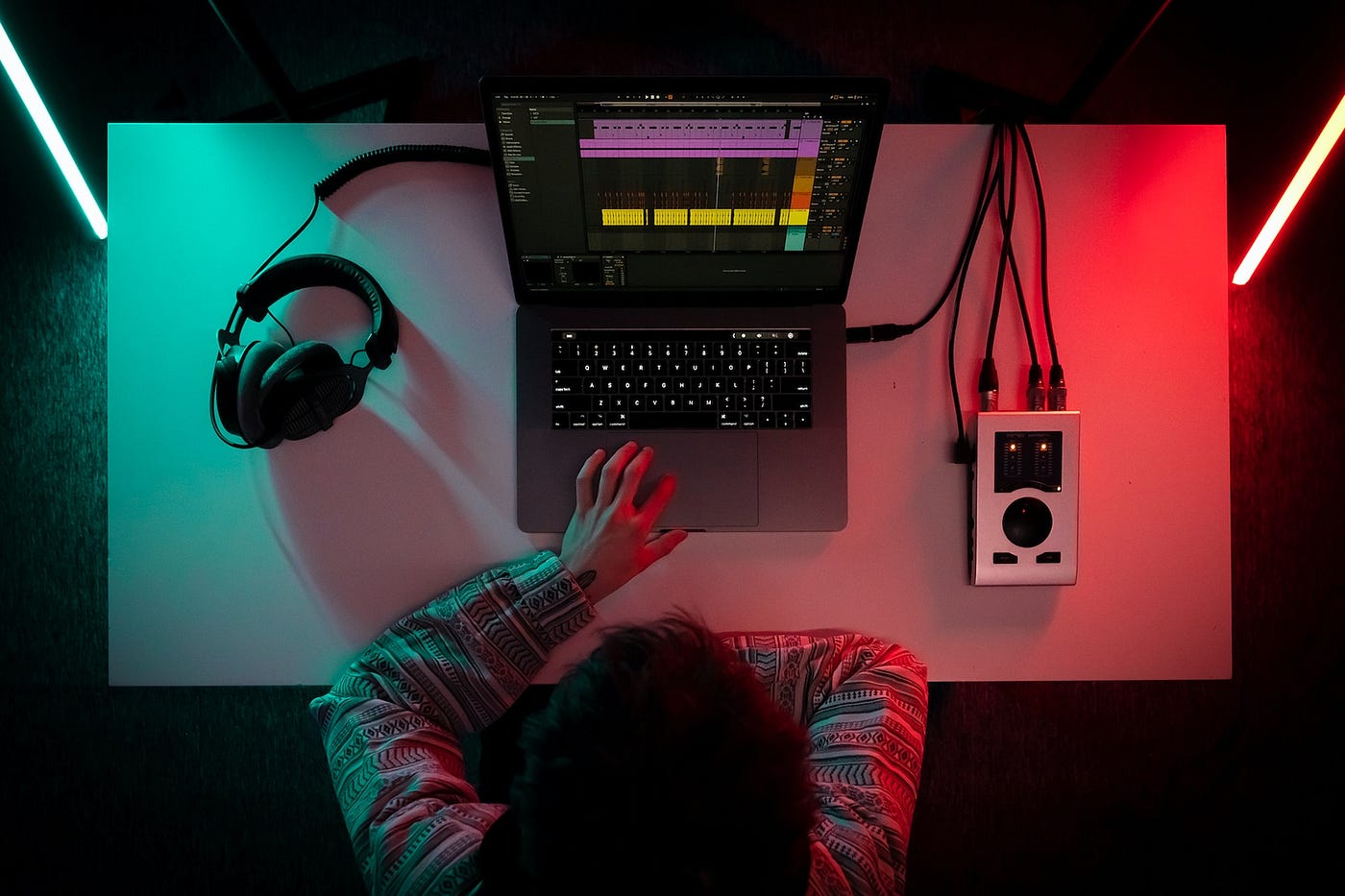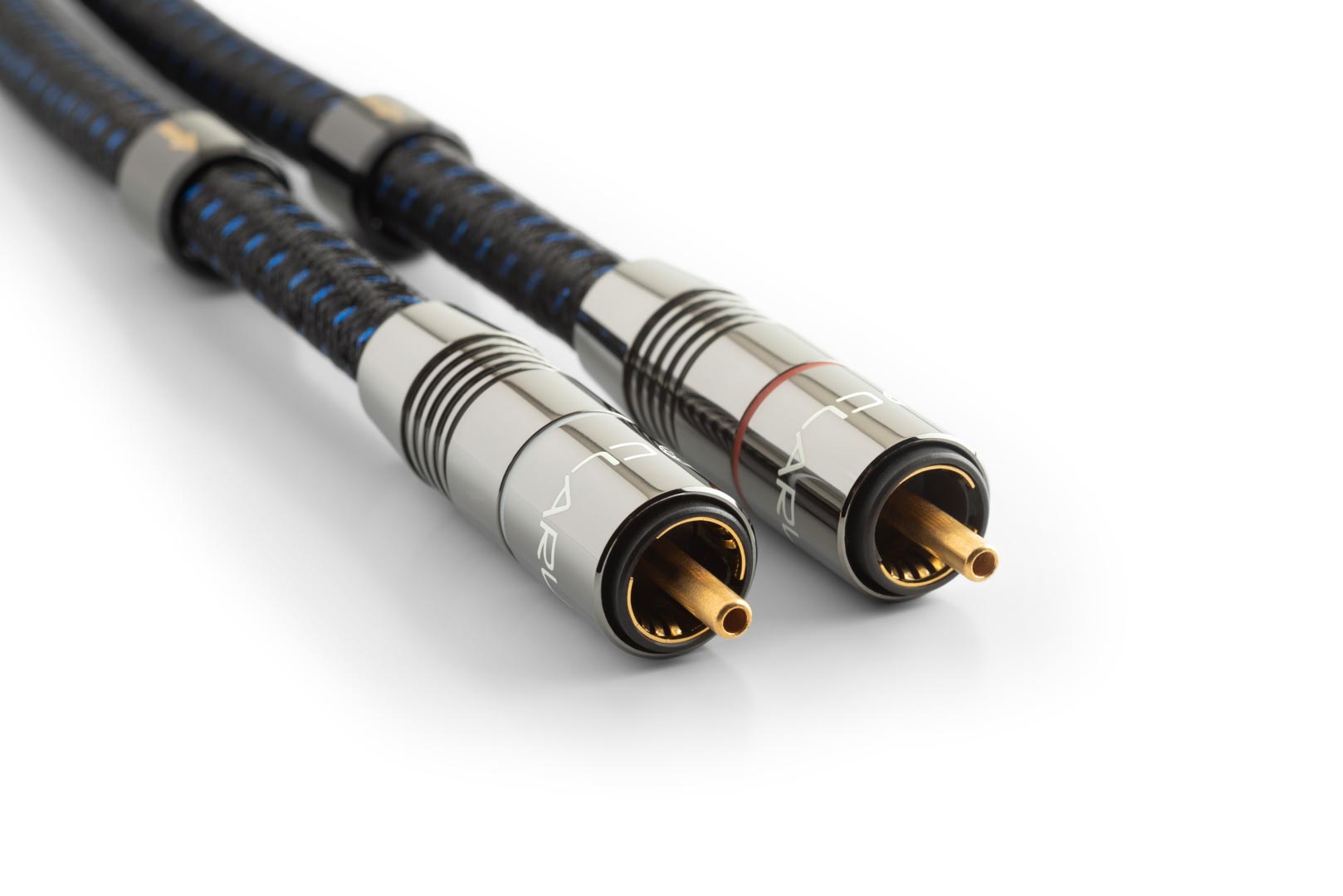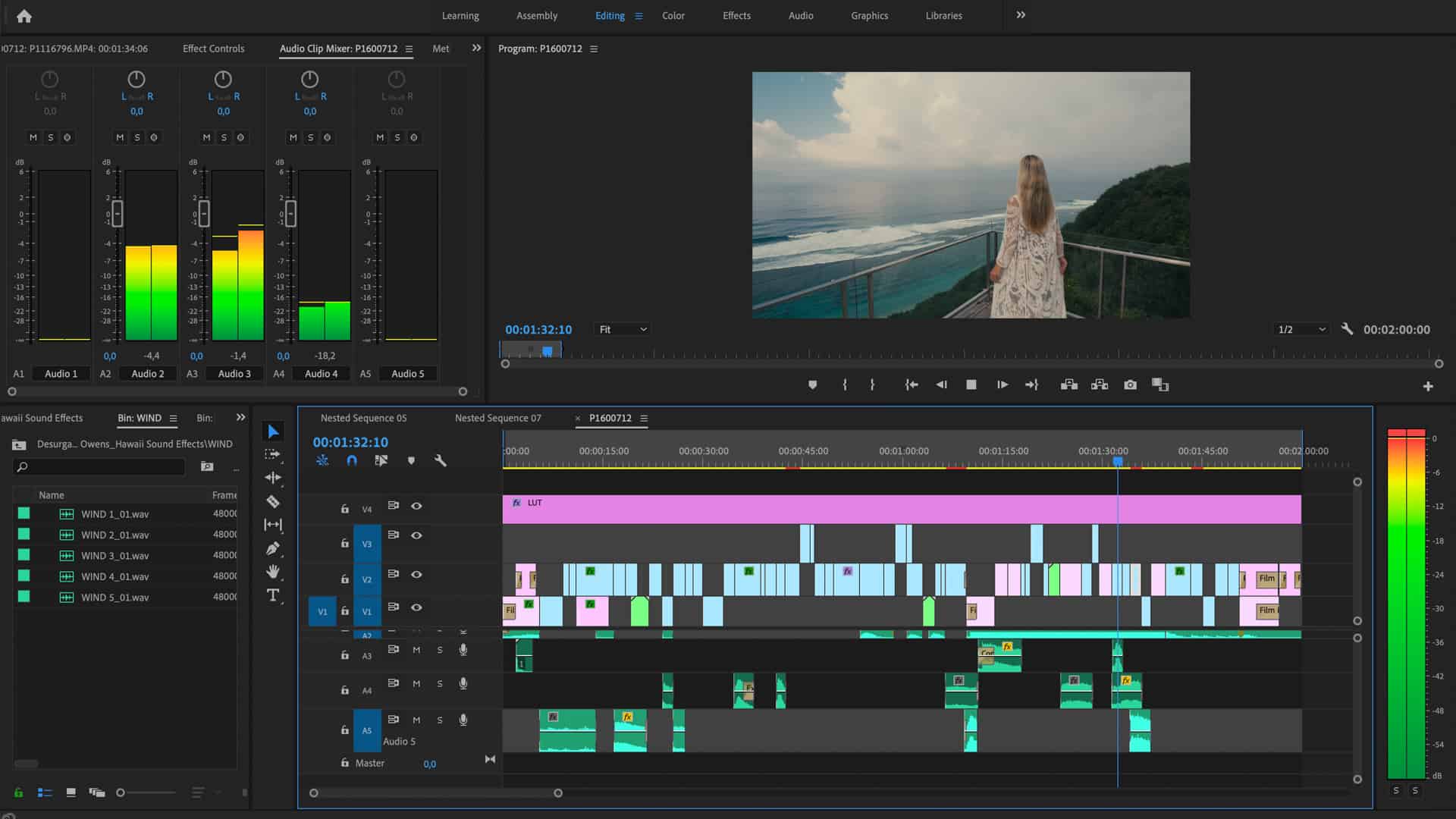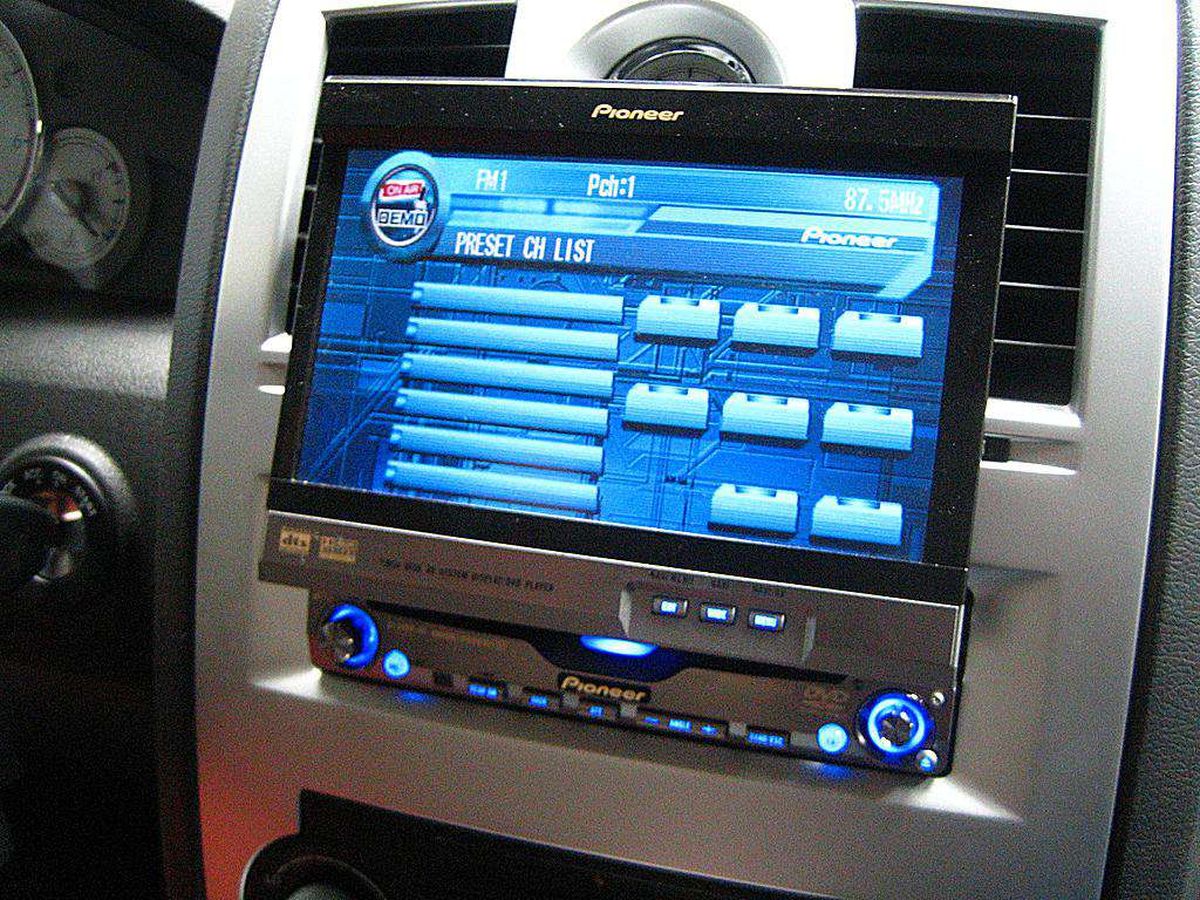Home>Production & Technology>Music Video>How To Make A Good Music Video


Music Video
How To Make A Good Music Video
Modified: January 22, 2024
Learn the essential steps to create a captivating music video and capture your viewers' attention. Discover the secrets to producing a high-quality Music Video.
(Many of the links in this article redirect to a specific reviewed product. Your purchase of these products through affiliate links helps to generate commission for AudioLover.com, at no extra cost. Learn more)
Table of Contents
- Introduction
- Choosing the Right Concept
- Crafting a Compelling Storyline
- Selecting the Perfect Location
- Planning and Shooting the Video
- Utilizing Lighting and Cinematography Techniques
- Capturing Dynamic Performances
- Choreographing Dance Sequences
- Incorporating Visual Effects
- Editing and Post-Production
- Sound Design and Audio Mixing
- Promoting and Sharing Your Music Video
- Conclusion
Introduction
Music videos have become an integral part of the music industry, serving as a powerful medium for artists to visually express their creativity and connect with their audience. A well-made music video can capture the attention of millions, spreading the reach and impact of a song far beyond its audio release. With the advent of online platforms and social media, music videos have become even more important in today’s digital age.
Creating a good music video requires careful planning, attention to detail, and a deep understanding of the aesthetics and storytelling elements that make a video visually engaging. From choosing the right concept to editing and post-production, every step of the process contributes to the overall quality and success of the video.
Whether you are an aspiring artist or a seasoned professional looking to elevate your music videos, this comprehensive guide will provide valuable insights and tips to help you create a compelling and visually stunning music video. We will delve into the key aspects of the video-making process, from selecting the perfect concept and location to utilizing lighting and cinematography techniques, capturing dynamic performances, incorporating visual effects, and handling the editing and post-production phase. Additionally, we will discuss the importance of sound design and audio mixing, as well as strategies for promoting and sharing your music video to maximize its impact.
By following the steps outlined in this guide and implementing the recommended techniques, you can take your music videos to the next level and increase your chances of creating a memorable and impactful visual representation of your music.
Choosing the Right Concept
When it comes to creating a compelling music video, choosing the right concept is essential. The concept is the overarching theme or idea that drives the visual narrative of your video. It sets the tone, establishes the mood, and helps to convey the message or story you want to tell.
Start by brainstorming ideas that align with the mood and vibe of your song. Consider the genre, lyrics, and emotions evoked by the music. Are you aiming for a romantic ballad, an energetic dance anthem, or a thought-provoking storytelling experience? Understanding the essence of your song will guide you in generating concept ideas.
Research existing music videos in your genre for inspiration, but be careful not to imitate. Instead, aim to be unique and original. Look for creative ways to convey your message, whether it involves metaphorical imagery, symbolic visuals, or abstract storytelling.
Collaboration is key in this process. Work closely with a director, cinematographer, and other creative professionals to brainstorm and refine your concept. Their expertise and fresh perspectives can bring new ideas to the table and help shape your vision.
Consider the practicality and feasibility of your concept. Ensure that it aligns with your budget, resources, and timeframe. Keep in mind that a successful music video doesn’t necessarily require extravagant sets or complicated production setups. Sometimes, simplicity and authenticity can be just as impactful.
Lastly, consider your target audience and how your concept will resonate with them. Are you targeting a specific demographic or aiming for a broader appeal? Understanding your audience’s preferences and tastes will assist you in tailoring your concept to maximize its potential impact.
Remember, the concept is the foundation of your music video and will guide all subsequent decisions in the filmmaking process. Choose a concept that not only complements your song but also allows you to showcase your creativity and authenticity as an artist.
Crafting a Compelling Storyline
A compelling storyline is the backbone of a memorable music video. It engages the viewer, creates emotional connections, and keeps them captivated from start to finish. Crafting a storyline that complements your song and concept requires careful planning and attention to detail.
Begin by analyzing the lyrics of your song. Look for narrative elements, emotions, and themes that can serve as the foundation for your storyline. Consider how you can translate these elements into visual storytelling. Is there a character arc that can be explored? Can you tell a story that complements or enhances the song’s message?
Structure your storyline in a way that captures the viewer’s attention and creates a sense of anticipation. Start with a strong opening and introduce conflicts or challenges that the protagonist must overcome throughout the video. This will create a sense of momentum and progression.
One effective approach is to use the concept of a “narrative arc.” This involves introducing a problem or conflict, building tension and excitement, and then resolving it by the end of the video. This narrative structure keeps the viewer engaged and invested in the storyline.
When crafting your storyline, consider the visual elements that can enhance the narrative. Use visuals, such as symbolism and metaphors, to convey emotions and messages. Explore different locations, settings, and props that can add depth and visual interest to your video.
Incorporating characters into your storyline can also add depth and relatability. Whether it’s the artist themselves or actors portraying specific roles, well-developed characters can enhance the storytelling experience. Take time to develop the personalities, motivations, and relationships of your characters to create a well-rounded narrative.
Another aspect to consider is the pacing of your storyline. Pay attention to the rhythm and tempo of your song and ensure that the storyline complements it. Use editing techniques, such as fast cuts or slow-motion sequences, to enhance the visual impact and synchronize with the music.
Lastly, be open to feedback and collaboration. Share your storyline with your creative team and gather their input. They may have valuable suggestions or ideas that can further enhance the narrative. Don’t be afraid to iterate and refine your storyline to create the most compelling and impactful music video possible.
A well-crafted storyline sets the stage for a visually engaging and emotionally resonant music video. Invest time and effort into developing a storyline that captivates your audience and leaves a lasting impression.
Selecting the Perfect Location
The location you choose for your music video plays a vital role in creating the right atmosphere and visually enhancing your storyline. The right location can set the tone, evoke emotions, and effectively convey your message. Here are some important considerations when selecting the perfect location for your music video.
First, think about how the location aligns with your concept and storyline. Does it enhance the narrative? Does it provide the desired backdrop for your song? Consider whether an urban setting, a natural landscape, or an indoor space would best complement your vision.
Research potential locations that match your desired aesthetic. Go beyond the conventional and explore unique and unconventional places that align with your concept. Scour local neighborhoods, parks, abandoned buildings, or even consider renting out specific spaces to create the atmosphere you envision.
Consider the practicality and logistics of the location. Does it have the necessary facilities and infrastructure to support your production? Are there any legal or permit requirements for filming in that area? Make sure to obtain any necessary permissions or permits well in advance to avoid complications on the day of the shoot.
Lighting is another important aspect to consider when selecting a location. Natural lighting can add a magical touch to your video, so if possible, scout locations during different times of the day to observe how the lighting changes. If shooting indoors, make sure the location allows for proper control of lighting conditions or has adequate artificial lighting options.
Accessibility and safety are crucial factors to take into account. Ensure that your crew and equipment can easily access the location. Assess any potential risks or hazards that may affect the safety of the crew and talent during filming.
Collaboration with your creative team is essential in the location selection process. Share your vision with the director and production designer and allow them to contribute their expertise. They may have insights into unique and interesting locations that will enhance your video.
Lastly, consider the budget. Some locations may come with additional costs, such as rental fees or permits. Evaluate whether the location is worth the investment and whether it aligns with your overall budget for the music video.
Remember, the location you choose will have a significant impact on the overall look and feel of your music video. Take the time to explore different options, weigh the pros and cons, and select a location that enhances your concept, visually complements your song, and fits within your logistical and budgetary constraints.
Planning and Shooting the Video
Once you have finalized your concept and selected the perfect location, it’s time to dive into the planning and shooting phase of your music video. The success of this stage relies on effective organization, clear communication, and attention to detail. Here are some key steps to consider:
Storyboarding and Shot List: Create a storyboard or shot list that outlines the specific shots and camera angles you will need for each scene. This will help guide your filming process and ensure you capture all the necessary footage.
Shot Planning: Consider the visual flow and transitions between shots. Plan how each shot will connect to the next to create a seamless and visually appealing video. Experiment with different camera movements, such as panning, tracking, or handheld shots, to add dynamism and enhance the storytelling.
Scheduling: Create a detailed shooting schedule that outlines the order of scenes, the time allocated for each shot, and the availability of crew and talent. Allow for extra time for unforeseen circumstances or creative experimentation.
Communication: Establish open and clear communication channels within your team. Ensure everyone understands their roles and responsibilities, and keep everyone informed of any updates or changes to the plan. Regularly check in with your crew, talent, and directors to address any concerns or questions that may arise.
Equipment and Technical Considerations: Depending on your budget and production level, determine the equipment needed for your shoot. Research and rent the necessary cameras, lenses, lighting equipment, and audio gear to achieve the desired production value. Test all equipment prior to the shoot to ensure everything is in working order.
Rehearsing and Blocking: Conduct rehearsals with your talent, especially for performance-based music videos. Blocking out the movements and positioning of your talent in advance will save time during filming and result in more polished performances.
Continuity: Pay attention to details such as wardrobe, hair, and makeup to maintain continuity throughout the video. Take reference photos of each scene and character to ensure consistency during the editing process.
Adaptability: Be prepared to adapt and problem-solve on set. Unexpected challenges may arise, such as changes in weather or technical issues, but having an adaptable mindset will help you overcome these obstacles and keep the shooting process on track.
Take Breaks: Filming can be physically and mentally demanding, so schedule breaks for your crew and talent to rest and recharge. This will help maintain energy levels and prevent burnout throughout the shoot.
Remember, effective planning and organization are key to a successful shoot. By carefully considering all aspects of the production process and anticipating potential challenges, you’ll be well-prepared to capture high-quality footage that brings your concept and vision to life.
Utilizing Lighting and Cinematography Techniques
The lighting and cinematography techniques utilized in your music video can greatly impact its overall look and visual appeal. By understanding how to effectively use lighting and implement cinematography techniques, you can create a captivating and immersive viewing experience. Here are some key considerations:
Lighting: Lighting sets the mood and atmosphere of your video. Experiment with different lighting setups to achieve the desired effect. Consider using natural light, studio lighting, or a combination of both. Play with shadows and highlights to create depth and enhance the visual interest of your shots.
Color Temperature: Understanding color temperature is crucial in setting the tone of your video. Different color temperatures, such as warm or cool tones, can evoke different emotions. Choose a color temperature that aligns with the mood of your song and concept.
Key, Fill, and Backlighting: Utilize the principles of key, fill, and backlighting to properly illuminate your subjects. The key light is the main source of light, the fill light helps to reduce shadows, and the backlight separates the subject from the background, adding depth and dimension.
Cinematography Techniques: Explore various cinematography techniques to enhance the visual storytelling in your music video. Techniques such as camera movement, framing, and composition can add dynamism and visual interest. Experiment with techniques like dolly shots, tracking shots, or unique angles to create a visually engaging experience.
Depth of Field: Manipulating the depth of field can draw attention to specific elements in your video. Use shallow depth of field to isolate subjects or objects, creating a focal point. Conversely, a deep depth of field can showcase the entire scene and provide context.
Shot Scale and Perspective: Varying shot scales and camera perspectives can create visual impact. Wide shots establish a sense of space, while close-ups capture emotions and intimate moments. Experiment with different angles and perspectives to add visual intrigue.
Camera Movement: The movement of the camera can convey energy and emotion. Use steady, smooth camera movements to create a sense of elegance, or experiment with handheld shots for a more frenetic or documentary-style feel. Consider using tools like gimbals or sliders to achieve steady and fluid camera movements.
Editing and Color Grading: The post-production phase is important for refining the look and feel of your video. Use color grading techniques to enhance the mood and aesthetics. Experiment with different color palettes or filters to achieve the desired visual style. Additionally, edit the footage to create a cohesive and compelling narrative flow.
Collaboration: Work closely with your cinematographer, director, and lighting team to collaborate on the creative vision for your video. Share references, mood boards, and examples to ensure everyone is aligned on the desired look and feel. Encourage open communication and experimentation to achieve the best results.
By effectively utilizing lighting techniques and implementing cinematography principles, you can elevate the visual quality and impact of your music video. Experiment, explore, and use these techniques to create a visually stunning and immersive experience for your audience.
Capturing Dynamic Performances
One of the key elements of a music video is capturing dynamic performances that leave a lasting impression on the audience. Whether you’re showcasing your own talent or working with performers, capturing captivating and energetic performances can elevate the overall impact of your video. Here are some tips to help you capture dynamic performances:
Preparation: Encourage the performers to rehearse and familiarize themselves with the song and choreography. This will help them feel more confident and comfortable during the shoot, allowing for more expressive and dynamic performances.
Energy and Emotion: Encourage the performers to fully embody the energy and emotion of the song. Whether it’s conveying passion, intensity, or joy, authentic and powerful performances can create a strong connection with the audience.
Camera Movement: Use camera movement to enhance the dynamism of the performances. Experiment with techniques such as following the performers with a tracking shot or capturing their movements from different angles. Camera movement can add energy and visual interest to the overall video.
Focus on Details: Be attentive to capturing the details of the performances. Close-ups of facial expressions, hand movements, or intricate dance steps can add depth and texture to the video, drawing the audience into the performance.
Variety in Shots: Mix up the shots to create visual variety and capture different aspects of the performance. Incorporate wide shots to showcase the overall choreography or stage presence, as well as close-ups to highlight individual performances or specific emotions.
Interaction with the Environment: Encourage performers to interact with the environment or props around them. This can enhance the visual storytelling and make the performances more dynamic and engaging.
Audience Engagement: Consider incorporating shots that capture the reactions and interactions of the audience, if applicable. This can add another layer of authenticity and create a sense of connection between the performers and their viewers.
Multiple Takes: Don’t be afraid to do multiple takes to ensure you capture the best performances. Encourage the performers to experiment and try different variations to maintain the energy and freshness throughout the shoot.
Collaboration: Work closely with the performers to understand their vision and creative input. Foster a collaborative and supportive environment where they feel comfortable expressing themselves fully.
Post-Production Enhancements: Use post-production techniques such as color grading and editing to enhance the performances further. Carefully select the best shots and sequence them in a way that amplifies the energy and impact of the performances.
Remember, capturing dynamic performances is about capturing the essence of the music and allowing the performers to shine. With careful planning, collaboration, and attention to detail, you can create a music video that showcases powerful and unforgettable performances.
Choreographing Dance Sequences
Choreographed dance sequences can add a captivating and visually stunning element to your music video. Whether you’re a dancer yourself or working with professional dancers, choreographing engaging and well-executed dance sequences requires careful planning and creativity. Here are some tips to help you in the process:
Understand the Song: Begin by thoroughly understanding the rhythm, tempo, and mood of the song. This will serve as a foundation for creating movements that perfectly complement the music.
Create a Concept: Develop a concept or theme for your dance sequence. Consider the emotions and narrative of the song, as well as the overall concept of the music video. This will help guide the choreography and ensure it aligns with the artistic vision.
Structure the Routine: Determine the structure and flow of the dance routine. Plan the beginning, middle, and end to create a cohesive and dynamic performance. Experiment with different formations, transitions, and levels to add complexity and visual interest.
Layer the Movements: Add dimension to the choreography by incorporating different levels and layers. Combine intricate footwork, arm movements, and body isolations to create a visually stimulating routine. These layers can add texture and depth to the dance sequence.
Highlight Individual Skills: Take into account the skills and strengths of the dancers involved. Highlight their unique abilities and showcase their individual talents within the choreography. This will make the performance more dynamic and allow each dancer to shine.
Match Choreography to Performer’s Abilities: Consider the skill level of the performers and adjust the choreography accordingly. Ensure that the dance moves are challenging yet achievable for the dancers involved. Striking a balance between pushing their limits and maintaining synchronization will result in a polished performance.
Use Variety in Moves: Incorporate a mix of different dance styles and techniques to add variety to the routine. Mix elements of contemporary, hip-hop, ballet, or other styles to create a unique fusion that suits the song and concept.
Create Visual Moments: Identify key moments in the song where you can create visually impactful moments within the choreography. These moments can include strong poses or synchronized movements that leave a lasting impression on the audience.
Rehearse and Refine: Invest time in rehearsal to perfect the choreography. Pay attention to details such as timing, precision, and musicality. Continuously refine and polish the routine to ensure a flawless and visually compelling performance.
Collaborate with Dancers: Work closely with the dancers during the choreography process. Encourage their input and creativity, as their insights can bring a fresh perspective to the routine. Collaboration fosters a sense of ownership and commitment, resulting in a more engaging performance.
Capture the Dance: During the filming process, consider different camera angles, movements, and transitions to effectively capture the dance sequence. Use close-ups, wide shots, and dynamic camera movements to showcase the choreography from various perspectives.
Choreographing dance sequences requires skill, creativity, and attention to detail. By following these tips and incorporating your own artistic vision, you can create captivating dance sequences that enhance the overall impact of your music video.
Incorporating Visual Effects
Visual effects can be a powerful tool in enhancing and elevating the visual storytelling in your music video. They allow you to create fantastical or surreal elements that capture the viewer’s attention and add a touch of magic to the overall visual experience. Here are some tips for effectively incorporating visual effects in your music video:
Plan Ahead: Determine in advance which scenes or moments in your video would benefit from visual effects. Consider the specific visual elements that you want to create and how they will enhance the narrative or the mood of the video.
Choose the Right Software/Techniques: Identify the software or techniques that are best suited for achieving the desired visual effects. Whether it’s compositing, motion tracking, 3D modeling, or particle simulations, selecting the right tools will help you execute your vision effectively.
Collaborate with VFX Experts: If you don’t have expertise in visual effects, consider collaborating with professionals who specialize in this field. Their knowledge and skills can help you achieve the desired visual impact while ensuring a high-quality result.
Balance Practical and Digital Effects: Sometimes, practical effects combined with digital effects can yield the best results. Consider using practical effects on set, such as props, lighting, or makeup, and then enhance or modify them with digital effects in post-production.
Make it Seamless: The key to successful integration of visual effects is to make them appear seamless within the overall video. Pay close attention to details such as lighting, shadows, and color grading to ensure that the effects blend naturally with the rest of the footage.
Match the Style and Aesthetic: Ensure that the visual effects align with the style and aesthetic of your music video. Whether it’s a futuristic sci-fi vibe, a vintage look, or a dreamy atmosphere, the effects should enhance and complement the overall tone and theme of the video.
Experiment and Be Creative: Visual effects offer a realm of possibilities, so don’t be afraid to experiment and think outside the box. Try out different techniques and combinations of effects to create unique and visually stunning visuals that leave a lasting impression on the viewer.
Use Effects Strategically: Instead of overusing effects throughout the entire video, consider selectively incorporating them into specific moments or scenes. This strategic use will create more impact and make those moments stand out, capturing the attention of your audience.
Test and Iterate: Before finalizing the visual effects, test them and gather feedback from trusted sources. Iterate and refine the effects as necessary to ensure that they align with your vision and meet your expectations.
Consider the Budget and Timeframe: Visual effects can be time-consuming and expensive, so consider your budget and timeframe when deciding which effects to pursue. It’s important to strike a balance between achieving your desired visual impact and working within your resources.
Incorporating visual effects can take your music video to a whole new level, immersing the viewer in a visually stunning and imaginative experience. By following these tips and exercising creativity, you can effectively integrate visual effects that enhance the overall storytelling and captivate your audience.
Editing and Post-Production
The process of editing and post-production is where all of your footage comes together to create a cohesive and visually compelling music video. From fine-tuning the visuals to incorporating special effects, the editing stage is where you can truly shape the narrative and atmosphere of your video. Here are some key considerations for editing and post-production:
Organize and Select Footage: Sort through your footage and select the best shots that align with your concept and storytelling. Create a clear folder structure to keep your files organized and easily accessible during the editing process.
Create a Rough Cut: Start with a rough cut of your video, assembling the selected shots in the desired sequence. Focus on creating a cohesive flow and rhythm, ensuring that the video aligns with the pacing and dynamics of the song.
Refine the Narrative: Fine-tune the storytelling by considering the pacing and structure of your video. Smooth out any transitions between scenes and make sure the narrative flows logically and enhances the emotional impact of the song.
Color Correction and Grading: Apply color correction and grading techniques to ensure consistency and enhance the overall visual aesthetic. Adjust the color balance, contrast, and saturation to achieve the desired mood and style for your video.
Audio Editing and Mixing: Pay close attention to the audio elements of your music video. Edit and mix the audio tracks to ensure a balanced sound and synchronize it with the visuals. This includes adjusting the levels, adding effects, and ensuring clear vocals.
Visual Effects and Compositing: If you’ve incorporated visual effects, this is the stage where you can integrate them seamlessly into your video. Use compositing techniques to blend the effects naturally within the footage and enhance the desired visual impact.
Transitions and Effects: Experiment with various transitions and effects to add visual interest and smooth transitions between shots. However, be mindful of not overusing these effects, as they should complement the video rather than distract from the content.
Timing and Synchronization: Pay attention to timing and synchronization between the visuals, audio, and any on-screen actions. Ensure that the visuals align with the beats and key moments in the music, creating a harmonious and engaging experience.
Feedback and Iteration: Seek feedback from your trusted peers or collaborators to gain fresh perspectives on your video. Make necessary adjustments based on the feedback to improve the overall quality and impact of your music video.
Finalize and Export: Once you’re satisfied with the editing and post-production process, export your video in the desired format and resolution. Ensure that the final output meets the technical standards for optimal playback and distribution.
Remember, the editing and post-production stage is where your vision comes to life. With meticulous attention to detail and creative choices, you can transform your raw footage into a polished and visually striking music video that truly captivates your viewers.
Sound Design and Audio Mixing
Sound design and audio mixing play a crucial role in enhancing the overall impact and quality of your music video. In this stage of post-production, you can refine and polish the audio elements to create a cohesive and immersive auditory experience. Here are some key considerations for sound design and audio mixing:
Choose the Right Sound Effects: Sound effects can add depth and realism to your music video. Consider the specific moments or actions in the video that could benefit from sound effects, such as footsteps, doors opening, or atmospheric sounds. Select and incorporate appropriate sound effects that enhance the visuals and create a more engaging experience.
Clean up and Enhance Audio Quality: Before diving into the mixing process, clean up any unwanted background noise or audio imperfections. This could involve using noise reduction tools or removing unwanted clicks or pops. Enhance the overall audio quality by applying equalization, compression, and other audio processing techniques.
Balance Audio Levels: Ensure that all audio elements in your music video are balanced properly. This includes the vocals, music, and any additional sound effects or dialogue. Each element should be audible and clear, without overpowering or distracting from one another. Pay attention to the dynamic range to maintain clarity and impact.
Sync Audio and Visuals: Sync the audio elements with the visuals in your music video. Ensure that all lip-syncing, performances, and actions align perfectly with the corresponding audio. This synchronization creates a seamless connection between the sound and visuals, enhancing the immersion and overall viewing experience.
Create Ambience and Atmosphere: Utilize sound design techniques to create a suitable ambience and atmosphere for your music video. This could involve adding background music, ambient sounds, or audio textures that enhance the mood and visuals. Select these elements strategically to elicit the desired emotions and immerse the viewers in the world of the video.
Apply Dynamics and Effects: Experiment with dynamics and effects to add impact and enhance certain moments in your music video. Use techniques such as fades, volume automation, spatial effects, and reverbs to create depth and dimension in the audio. These creative choices can elevate the emotional impact of your video and add a professional touch.
Master for Different Platforms: Consider the different platforms and mediums through which your music video will be distributed. Ensure that the audio is optimally mixed and mastered for each platform, whether it’s streaming services, social media, or theatrical screenings. Adapt the audio levels and format according to the specific requirements of each platform.
Listen and Iterate: Continuously listen to the audio mix and make adjustments as necessary. Take breaks and return with fresh ears to ensure that you’re achieving the desired sonic quality. Seek feedback from others to gain different perspectives and make iterative changes to refine the audio mix further.
Consider Professional Help: If you’re not confident in your audio mixing skills, working with a professional sound engineer or audio mixer can greatly improve the quality of your music video’s sound. They have the expertise and tools to fine-tune the audio and ensure a polished final result.
Sound design and audio mixing are essential elements in creating a captivating and immersive music video. By carefully crafting the audio elements and attention to detail in the post-production stage, you can enhance the overall impact of your video and deliver an outstanding auditory experience to your viewers.
Promoting and Sharing Your Music Video
Creating a high-quality music video is just the first step. To maximize its reach and impact, it’s crucial to effectively promote and share your video with your target audience. Here are some key strategies to consider when promoting and sharing your music video:
Create a Release Plan: Develop a comprehensive release plan that outlines the different stages and tactics for promoting your music video. Consider timing, target audience, and platforms where you will distribute and promote the video.
Optimize for SEO: Optimize your video’s title, description, and tags with relevant keywords to improve its visibility in search engine results. Use descriptive and engaging language that accurately represents the content of your video.
Utilize Social Media: Leverage the power of social media to promote your music video. Share teasers, behind-the-scenes footage, and stills across platforms like Instagram, Twitter, Facebook, and TikTok. Engage with your audience through captions, hashtags, and interactive features to build excitement and encourage sharing.
Collaborate with Influencers: Identify influencers or content creators in your niche who have a relevant and engaged audience. Collaborate with them by providing exclusive content, behind-the-scenes access, or opportunities for their audience to engage with your music video. This can significantly expand your reach and generate buzz.
Engage with Your Audience: Interact with your audience by responding to comments, messages, and mentions on social media. Show appreciation for their support and encourage them to share or tag friends who might enjoy your music video. Building a connection with your audience fosters loyalty and encourages them to become advocates for your video.
Submit to Video Platforms: Upload and distribute your music video to popular video platforms such as YouTube, Vimeo, and Vevo. Take advantage of their algorithmic recommendations and reach wider audiences. Optimize the video title, description, and tags to boost discoverability.
Engage with Online Communities: Participate in online communities and forums relevant to your music genre or target audience. Share your music video where appropriate and engage in discussions to build relationships with potential fans and industry professionals.
Collaborate with Other Artists: Explore collaboration opportunities with other artists or bands. Cross-promote each other’s music videos on social media or through live performances. This can leverage each other’s fan base and introduce your video to new audiences.
Create a Press Release: Craft a compelling press release that provides key information about your music video, such as the concept, behind-the-scenes stories, and release dates. Distribute it to relevant media outlets, music blogs, and online magazines to secure coverage and interviews.
Host a Virtual Premiere or Live Event: Host a virtual premiere or live event to debut your music video. This can build anticipation and create a shared and interactive experience for your audience. Leverage platforms like YouTube Live or Facebook Live to reach a larger audience.
Run Targeted Advertising Campaigns: Consider running targeted ads on platforms like YouTube, Facebook, or Instagram to reach potential fans who may be interested in your music video. Set clear objectives, define your target audience, and monitor the performance of your ads to optimize outreach and engagement.
Collaborate with Video Promotion Companies: Explore collaborations with video promotion companies or digital marketing agencies that specialize in promoting music videos. They have the expertise, connections, and resources to maximize visibility and reach in a competitive market.
Promoting and sharing your music video requires a multi-faceted approach that combines strategic planning, online engagement, collaboration, and targeted marketing tactics. By employing these strategies, you can increase the visibility and impact of your music video, reaching and connecting with a wider audience.
Conclusion
Creating a compelling and visually captivating music video is a multi-faceted endeavor that requires careful planning, creative execution, and effective promotion. Throughout this comprehensive guide, we have explored various important aspects of music video production, from choosing the right concept and location to incorporating visual effects, capturing dynamic performances, and perfecting sound design. We have also discussed strategies for promoting and sharing your music video to maximize its reach and impact.
By following the tips and techniques in this guide, you can elevate the quality and impact of your music video, effectively engaging and captivating your audience. Whether you are an aspiring artist or an experienced professional, the art of music video production is a continuous learning process. Embrace experimentation, collaboration, and the power of storytelling to create music videos that resonate with your fans and leave a lasting impression.
Remember, each music video is an opportunity to express your creativity, connect with your audience, and leave your artistic mark. Embrace the journey, explore different techniques, and push the boundaries of your own capabilities as a filmmaker. With dedication, persistence, and a passion for your craft, you can create music videos that not only showcase your music but also leave a lasting impact on viewers around the world.











